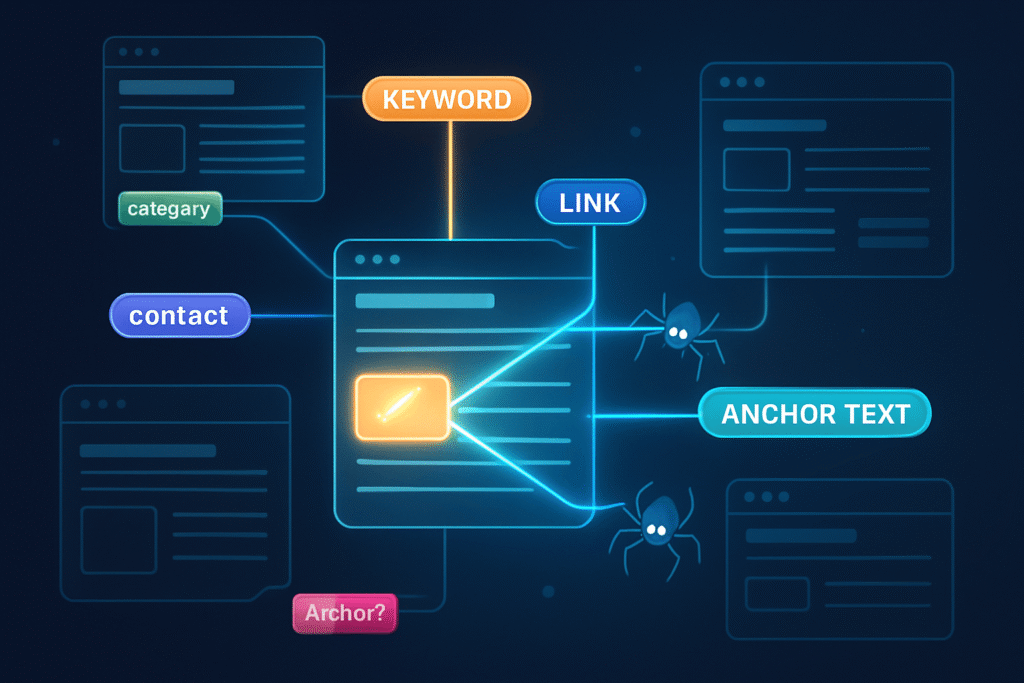Link equity is one of those SEO terms that sounds simple but often gets overlooked in real-world strategies. Imagine you’ve built an amazing network of links pointing to your site, but if you don’t manage how those links pass their authority — especially through anchor text diversity and placement — you might be throwing all that hard-earned value away.
Let’s break down why anchor diversity and placement matter so much, and how you can avoid wasting your precious link equity.
What is Link Equity and Why Should You Care?
Think of link equity like the credit or “juice” your website earns from links. When another website links to yours, it’s essentially giving you a vote of confidence that tells search engines your content is trustworthy and valuable. The more quality votes you get, the better your chance of ranking higher.
But here’s the catch: not all votes are equal. How the link is anchored—the words you click on—and where that link is placed on a page influence how much authority actually flows through. If these factors aren’t managed well, your link equity can leak away or even be ignored by search engines.
Why Anchor Diversity Is Critical
Anchor text is the clickable text of a link. It’s like the signpost that tells search engines what the linked page is about. But if every link to your site uses the exact same anchor text, especially a keyword you want to rank for, it starts to look spammy.
This is where anchor diversity comes in. By mixing branded anchors, exact matches, partial matches, and generic phrases like “click here,” you create a natural-looking link profile. This variety signals to search engines that your backlinks are organic and trustworthy.
The Risk of Ignoring Anchor Diversity
Using only one type of anchor text, especially exact match keywords, is like shouting the same word over and over in a crowded room. It loses impact and can even backfire—Google might penalize you or devalue those links. That means all the link equity you thought you were gaining is essentially wasted.
On the flip side, a diverse anchor text strategy ensures your link profile looks healthy and distributes link equity naturally across your pages.
Placement Matters: Where You Put Your Links Affects Their Power
Not all links are created equal, even if they’re on great websites. A link buried in a website’s footer or sidebar often passes far less link equity than one embedded naturally within the main body of a page.
Why? Because search engines give more weight to links that appear relevant and helpful to users as they read through content. A link in the heart of an article acts like a trusted recommendation, while a link in the footer might be viewed as less meaningful.
So, strategically placing your links where they add value not only improves user experience but also maximizes how much authority your pages receive.
Common Mistakes That Drain Your Link Equity
Let’s get real: many websites unintentionally waste their link equity through a few common mistakes.
- Overusing Exact Match Anchors: It’s tempting to always link with your main keyword, but this can lead to penalties or diminished link value.
- Poor Link Placement: Links tucked away in footers, sidebars, or irrelevant sections simply don’t carry much weight.
- Neglecting Internal Linking: Many focus only on external backlinks but forget that internal links help spread link equity across your site. Neglecting this means some pages don’t get the authority boost they deserve.
How to Protect and Maximize Your Link Equity
Here’s where the magic happens. Managing your link equity effectively boils down to two things: diversity and placement.
- Build a Balanced Anchor Profile: Use a natural mix of anchor texts. Don’t force keywords; write your anchors like you’re linking to a friend—clear, relevant, and varied.
- Place Links Thoughtfully: Insert links within relevant paragraphs where they add value. Avoid stuffing them in footers or unrelated areas just for the sake of more links.
- Use Internal Linking to Your Advantage: Link between your own pages to help distribute authority evenly and improve user navigation.
Regularly auditing your link profile with SEO tools helps spot where your anchors might be overused or links poorly placed. This way, you can adjust your strategy and keep your link equity flowing efficiently.
Why This Matters for Your SEO Growth
When you nail anchor diversity and placement, you’re not just playing defense against penalties — you’re actively boosting your SEO performance. Every link passes maximum authority, helping your pages climb higher in search results, attract more organic traffic, and gain credibility with your audience.
Think of it like tuning a high-performance car: if you let fuel leak or waste power, you won’t get the speed and efficiency you paid for. The same goes for your link equity.
If you want to dig deeper and make sure your link strategy is rock solid, seosets.com offers excellent insights and tools to help you optimize your SEO game.
Frequently Asked Questions
Q1: Can I use mostly branded anchors and still get good link equity?
Yes, branded anchors add trust and diversity, but a healthy mix with other anchor types works best.
Q2: Are footer and sidebar links completely worthless?
Not worthless, but they typically pass less link equity than links in main content. Use them sparingly.
Q3: How often should I review my anchor text and link placement?
Aim for quarterly reviews or after major site updates to keep your profile natural and effective.
Q4: Does internal linking really impact SEO?
Absolutely. It helps distribute link equity across your site and improves user experience.
Q5: Which tools can help me manage anchor diversity and placement?
Tools like Ahrefs, SEMrush, and Moz provide detailed analysis of your backlinks and anchor texts.


